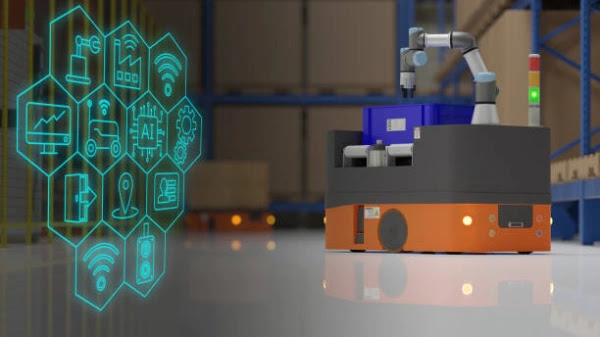3D Printing in Smart Construction and Prototyping
Revolutionizing the Building Industry
Introduction
The integration of 3D printing technology into the
construction industry has sparked a revolution in the way buildings are
designed, prototyped, and constructed. With its ability to fabricate complex
structures layer by layer, 3D printing offers unparalleled flexibility,
efficiency, and sustainability in construction processes. In this article, we
explore the transformative impact of 3D printing in smart construction and
prototyping, examining its applications, benefits, and future prospects in
reshaping the built environment.
- Understanding
3D Printing in Construction: 3D printing, also known as additive
manufacturing, involves the layer-by-layer deposition of materials to
create three-dimensional objects from digital models or CAD
(Computer-Aided Design) files. In the context of construction, 3D printing
enables the fabrication of building components, structures, and even
entire buildings using a variety of materials, including concrete,
plastic, metal, and composite materials.
- Applications
of 3D Printing in Construction: a. Building Components: 3D
printing is used to fabricate various building components, such as walls,
columns, beams, and facades, with intricate geometries and customized
designs. These components can be produced off-site in controlled environments
and assembled on-site, reducing construction time and labor costs. b. Prototyping
and Modeling: 3D printing is widely used in the prototyping and
modeling stages of construction projects, allowing architects, engineers,
and designers to create physical prototypes and mock-ups of building
elements for visualization, testing, and validation. c. Customization
and Design Freedom: 3D printing enables the realization of complex and
customized architectural designs that would be challenging or impossible to
achieve using traditional construction methods. This flexibility allows
for greater design freedom and innovation in building design and
construction. d. Sustainable Construction: 3D printing offers
opportunities for sustainable construction practices by minimizing
material waste, reducing construction waste, and optimizing resource
utilization. Additionally, the use of eco-friendly materials and the
ability to create lightweight structures contribute to sustainability in
construction. e. Emergency and Disaster Relief: 3D printing can be
deployed for rapid construction in emergency and disaster relief
scenarios, where traditional construction methods may be impractical or
too time-consuming. Mobile 3D printing units can quickly fabricate
temporary shelters, housing, and infrastructure in disaster-affected
areas.
- Benefits
of 3D Printing in Construction: a. Speed and Efficiency: 3D
printing accelerates construction processes by automating the fabrication
of building components, reducing construction time, and enabling rapid
prototyping and iteration. b. Cost Savings: By minimizing material
waste, labor costs, and construction time, 3D printing offers significant
cost savings compared to traditional construction methods, particularly
for complex or customized designs. c. Design Flexibility: 3D
printing allows for the creation of highly intricate and customized
designs with minimal constraints, empowering architects and designers to
explore new aesthetic possibilities and architectural forms. d. Resource
Efficiency: 3D printing optimizes material usage and reduces
construction waste, leading to greater resource efficiency and
sustainability in construction projects. e. Remote Construction: 3D
printing can be deployed in remote or inaccessible locations where traditional
construction methods may be impractical or expensive, enabling
construction in challenging environments.
- Challenges
and Considerations: Despite its many benefits, 3D printing in
construction also presents certain challenges and considerations: a. Material
Properties: Ensuring the mechanical, thermal, and durability
properties of 3D-printed structures meet regulatory and safety standards
is essential for ensuring structural integrity and long-term performance.
b. Scale and Size Limitations: Current 3D printing technologies
have limitations in terms of scale and size, particularly for large-scale
construction projects, requiring further advancements in printing
techniques and equipment. c. Regulatory and Code Compliance:
Adapting building codes, regulations, and industry standards to
accommodate 3D-printed structures and materials poses challenges,
requiring collaboration between industry stakeholders, regulatory bodies,
and policymakers. d. Technological Maturity: While 3D printing has
demonstrated significant potential in construction, the technology is
still relatively nascent and evolving, requiring further research,
development, and validation to realize its full potential and address
technical challenges.
- Future
Directions and Innovations: Looking ahead, several trends and
innovations are shaping the future of 3D printing in construction: a. Advanced
Materials: The development of new materials and composites
specifically designed for 3D printing holds promise for enhancing the
performance, durability, and sustainability of printed structures. b. Robotic
Construction: Advances in robotics and automation are enabling the
development of robotic 3D printing systems capable of autonomously
constructing buildings and infrastructure, further streamlining construction
processes. c. Integration with IoT and AI: The integration of 3D
printing with Internet of Things (IoT) sensors and artificial intelligence
(AI) algorithms enables real-time monitoring, optimization, and control of
printing processes, enhancing efficiency and quality control. d. On-site
Printing: Mobile and on-site 3D printing systems allow for the direct
fabrication of structures at the construction site, reducing
transportation costs, logistics challenges, and environmental impact
associated with off-site fabrication.
Conclusion
3D printing is revolutionizing the construction industry by
offering a more efficient, cost-effective, and sustainable approach to building
design and fabrication. From customized architectural elements to rapid
prototyping and emergency construction, 3D printing has diverse applications
that promise to reshape the way we design, build, and inhabit our built
environment. While challenges remain, ongoing advancements in materials,
technologies, and regulatory frameworks are paving the way for a future where
3D printing plays a central role in smart construction and prototyping, driving
innovation and sustainability in the built environment.

